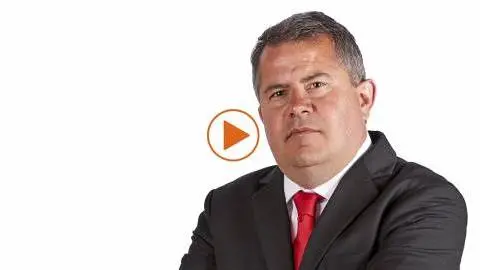So we finally have some US inflation. Or do we?
It’s not easy to grasp the rhythm coming from the US right now. Like any good hip hop mix, the rap is upbeat but the rhyme has a complexity to it. Inflationary tendencies are setting a hot beat, but there is a murky undercurrent coming from deep negative US real rates. The official sector is all in; it may need to hang in there a bit longer before the job is fully done
The Federal Reserve has seen it all before, and is at it again – generating demand to help stoke inflation
The last time US inflation exceeded 4% was around the time of the great financial crisis. Since then, a low rate and tame inflation environment has dominated. In fact, US growth or inflation has never really motored since then. It has been more impressive than seen in Europe, but not as energetic as would be typical from the US economy.
It took quite some years before the Federal Reserve felt comfortable enough to tempt its funds rate higher, which it finally did, culminating in a peak at 2.5% in 2019. The Fed had its critics, as it came against a backdrop where headline inflation had averaged an unimpressive 1.7% since 2008. In fact, the US economy was bracing itself for a recession by mid-2019, long before we ever heard of Covid, which ultimately pushed us into one, a big one.
The Fed has had some practice at resussitation. But the speed of reaction here has been particularly impressive.
The policy response to Covid was remarkable on a number of fronts. First, the Fed had a bag of tricks that it had employed during the great financial crisis that it could unleash in a super quick fashion. And the Fed added to these, through various bespoke pandemic relief measures. The Fed also chopped rates to zero in a flash and engaged in a very aggressive bond buying programme, hoovering up bonds and adding liquidity at a speed that was supersonic compared with the great financial crisis response, which was reasonably swift in itself.
Fast forward to today, and the 4.2% headline inflation reading is an outcome of this response. But it's not just the Fed that has driven this.
The US Treasury has been a key additional stimulator – printing bills to pay its citizens
The second big difference seen in the pandemic response is the reaction of the US Treasury. Not only did the US run up a fiscal deficit of some 20% of GDP to help shield the economy from the pandemic, but the US has also activated a version of helicopter money – handing out cash to citizens. Not from the central banks (pure helicopter) but from the government (same effect for the recipient).
The official sector has effectively been printing bills as a form of helicopter money.
The US Treasury financed this, and other pandemic-related spending, by issuing short-term bills (mostly). Issuing bills in this fashion is akin to printing money, with the one key difference being that bills issuance gets added to the level of government debt. Although in terms of application it’s the same thing; it’s the official sector (government and central bank) printing something, anything, to help facilitate payments to its citizens. This has been a monumental move by the official sector as a whole to help secure a US safety net, and subsequent macroeconomic recovery.
This, too, is a factor that has driven demand and has helped to generate some inflation.
And that in part explains why the Fed will be reluctant to upend the stimulus too soon – why when things can still turn sour?
It also in a way explains why the Federal Reserve will not rush to hike rates. Why? Once the Fed hit zero on rates and was full-on engaged in aggressive bond buying, there was little more it could do. The Fed needed the US Treasury to chip in big. The argument for doing so was not just a reflection of the current moment, but also about the future. The US was undergoing some traumatic naval gazing centred on social inequality and the need for better inclusion. The Fed, on more than one occasion, has highlighted changes within its own thinking, and has noted that it will maintain its easy policy stimulus until the most vulnerable parts of the economy are put back to work. That suggests a much more patient Fed than would be typical.
This is a Fed that sets policy towards social equality, with a tip of the slipper to the US Treasury for helping out.
There is another important dimension to this. The fact that the US Treasury has forked out in support of the economy through big spending including stimulus checks, is also a rationale for the Fed to be patient. Why? Because the Fed has changed. In different times gone by, central banks would balance a big fiscal deficit by tightening monetary policy. Here it's different. Here the Fed has effectively asked the US Treasury to help out to secure recovery. The US Treasury has done so. Given that, it would be a bit disingenious for the Fed to go ahead and hike rates at the first sniff of an upturn. The Fed’s plan is to get the biggest bang that it possibly can from its buck, in what is effectively a team effort to resuscitate the US economy.
But there are dark demons at play too. Deep negative real rates pose questions about inflation sustainability
This brings us full circle to the reopening. It’s impressive, and will continue to be in the coming couple of quarters. Growth numbers are eye-wateringly high (7%) and inflation is popping (4%). But, where will we be say in 2Q22? Likely still running at or above trend, according to ING's chief international economist James Knightley, who has made some super calls along the way. That risks the Fed being behind the curve, perhaps having to hike by more later.
But then what? Remember, in 2019 the Fed finally managed to get the funds rate up to 2.5%; and the economy shuddered.
We are constructive on medium-term prospects, and in that sense we anticipate Fed hikes. At the same time, we are frankly a tad perplexed by what we see in the real rates space. The 10yr market rate minus inflation expectations gives us the real rate, and it is running at -90bp. That paints quite a poor picture for the medium-term outlook, as theoretically there is a link to medium-term growth aspirations. As it is, deep negative real rates are not discounting growth at all. In fact, they are predicting stagnation, or worse. That’s a warning sign we can’t ignore.
Deep negative real rates are not discounting growth at all. That’s a warning sign that we can’t ignore.
The bond market is usually quite a shrewd predictor of the future. Right now the bond market is telling us that the Fed is not going to rush into hiking rates. We can glean this from the 2yr yield stuck in the 15bp area (comfortably within the Fed's zero to 25bp range for the funds rate). The bond market is also telling us that there is no mad panic on this. We can infer this from the 10yr yield at just 1.7%. It is up 10bp since the jump in April inflation, but should be much higher to really cushion the effect of higher inflation on real returns. At the same time, perversely, the bond market contains a decent inflation discount e.g. 2.8% of inflation is discounted every year for the next four years, at least.
But, and it’s a big but – to achieve that, real rates have been pushed deep into negative territory.
We now have confirmation that inflation is running at over 4%. Good! We need that to help reduce debt levels in real terms. We should also welcome the implied demand excess that might underpin the rise in inflation. We expect that to continue in the coming quarters.
But after that, things get a bit murkier. We remain upbeat, but we also can’t ignore deep negative real yields. We target for them to become less negative as the recovery matures. But if they don’t, we’d be concerned.
Not our central view, but if real rates were to remain exceptionally deeply negative, it could mean that the US official sector needs to remain heavily invested, on an ongoing basis.
We’ve seen versions of this before – demographic drags come from Europe and Japan (aging populations) underpin stern structural obstacles. The challenge in the US is to break away from this, and real yields are as good a measure as any to assess where we are in this fight. And right now, there is still some work to be done.
This publication has been prepared by ING solely for information purposes irrespective of a particular user's means, financial situation or investment objectives. The information does not constitute investment recommendation, and nor is it investment, legal or tax advice or an offer or solicitation to purchase or sell any financial instrument. Read more
Download
Download opinion
13 May 2021
It’s now or never This bundle contains 8 Articles
Padhraic Garvey, CFA
Padhraic Garvey is the Regional Head of Research, Americas. He's based in New York. His brief spans both developed and emerging markets and he specialises in global rates and macro relative value. He worked for Cambridge Econometrics and ABN Amro before joining ING. He holds a Masters degree in Economics from University College Dublin and is a CFA charterholder.
Padhraic Garvey, CFA
